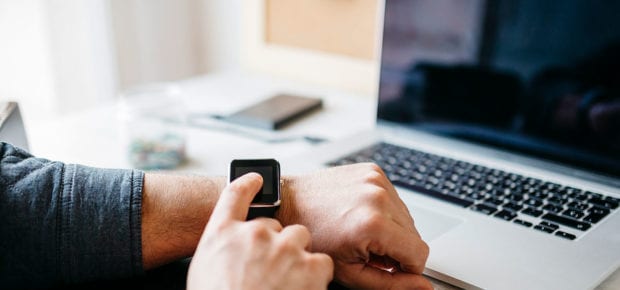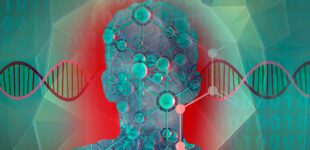May 14, 2020
Many industries across the world have shut down normal operations and others have significantly scaled back activities in efforts to keep workers safe and prevent COVID-19 from further spread. But as various regions experience a “flattening of the curve” and in some areas, a decrease in new cases, companies are now beginning to evaluate how to progressively and safely return employees to their various places of work.
Because the virus can spread through asymptomatic people that might not realize they are sick yet, researchers stress that testing and health monitoring is a crucial step as we gradually start the process of resuming our daily work routines. To gather that necessary data, technology is going to continue to play a pivotal role in providing us insights on the current state of our own health.
Numerous practices and technologies are being explored as ways aid in understanding employee and workforce health:
1. Wearables
Wearables and smart watches have become popular because they inform us about health vitals like biometrically tracking unusual spikes in heart rates, and monitoring sleep and weight. These same technologies may have the capability to monitor and track COVID-19 symptoms, such as fever or increased heart rates.
“Integration of biomedical sensors on employees’ arms through smart watches, which can be connected through dedicated analytic servers, can help to test if employees are sick or not,” explains IEEE member Ramneek Kalra.
See also Wearable Sensing and Telehealth Technology with Potential Applications in the Coronavirus Pandemic
2. Sensors
Another way to track employee health is through the use of passive sensors.
“The passive data gathering happens when the sensor obtains information without the user intentionally providing it,” says IEEE Senior Member André Leon Gradvohl. “For example, airports are using infrared [technology] to calculate the temperatures of passengers passing through the lobby — this capture was done passively. By combining the data obtained from these different sensors, it is possible to infer the health status of employees.”
IEEE Senior Member Paul Kostek envisions corporations installing sensors in break room and restroom entryways to determine if employees are running a temperature throughout the day. But Kostek does warn that this type of passive data gathering “will raise privacy issues that employers and their employees will need to address.”
3. Chatbots
Another way to understand and monitor employee health is through the use of online chatbots or robot doctors.
“Online chatbots or ‘robot doctors’ will eventually be able to collect information, advise on certain conditions and forward cases to medical professionals,” says IEEE Member Antonio Espingardeiro. “These technologies will recreate virtual assistants through natural language processing, image recognition and machine learning techniques.”
By plugging in or virtually discussing symptoms with a chatbot, employees may be able to seek better guidance on whether or not they should consult a doctor.
In the future, employers face hard decisions about when and how to safely bring remote employees back into offices and facilities. Technology could be a key in helping to monitor companies and workers that need to remain healthy in the age of COVID-19.





 Meaningful Momentum or Running in Place?
Meaningful Momentum or Running in Place? AI Through Our Ages
AI Through Our Ages Liquid Infrastructure: Our Planet's Most Precious Resource
Liquid Infrastructure: Our Planet's Most Precious Resource The Impact of Technology in 2025
The Impact of Technology in 2025 Quantum and AI: Safeguards or Threats to Cybersecurity?
Quantum and AI: Safeguards or Threats to Cybersecurity? Why AI Can't Live Without Us
Why AI Can't Live Without Us Bits, Bytes, Buildings and Bridges: Digital-Driven Infrastructure
Bits, Bytes, Buildings and Bridges: Digital-Driven Infrastructure Impact of Technology in 2024
Impact of Technology in 2024 Emerging AI Cybersecurity Challenges and Solutions
Emerging AI Cybersecurity Challenges and Solutions The Skies are Unlimited
The Skies are Unlimited Smart Cities 2030: How Tech is Reshaping Urbanscapes
Smart Cities 2030: How Tech is Reshaping Urbanscapes Impact of Technology 2023
Impact of Technology 2023 Cybersecurity for Life-Changing Innovations
Cybersecurity for Life-Changing Innovations Smarter Wearables Healthier Life
Smarter Wearables Healthier Life Infrastructure In Motion
Infrastructure In Motion The Impact of Tech in 2022 and Beyond
The Impact of Tech in 2022 and Beyond Cybersecurity, Technology and Protecting Our World
Cybersecurity, Technology and Protecting Our World How Technology Helps us Understand Our Health and Wellness
How Technology Helps us Understand Our Health and Wellness The Resilience of Humanity
The Resilience of Humanity Harnessing and Sustaining our Natural Resources
Harnessing and Sustaining our Natural Resources Creating Healthy Spaces Through Technology
Creating Healthy Spaces Through Technology Exceptional Infrastructure Challenges, Technology and Humanity
Exceptional Infrastructure Challenges, Technology and Humanity The Global Impact of IEEE's 802 Standards
The Global Impact of IEEE's 802 Standards Scenes of our Cyber Lives: The Security Threats and Technology Solutions Protecting Us
Scenes of our Cyber Lives: The Security Threats and Technology Solutions Protecting Us How Millennial Parents are Embracing Health and Wellness Technologies for Their Generation Alpha Kids
How Millennial Parents are Embracing Health and Wellness Technologies for Their Generation Alpha Kids Space Exploration, Technology and Our Lives
Space Exploration, Technology and Our Lives Global Innovation and the Environment
Global Innovation and the Environment How Technology, Privacy and Security are Changing Each Other (And Us)
How Technology, Privacy and Security are Changing Each Other (And Us) Find us in booth 31506, LVCC South Hall 3 and experience the Technology Moon Walk
Find us in booth 31506, LVCC South Hall 3 and experience the Technology Moon Walk Virtual and Mixed Reality
Virtual and Mixed Reality How Robots are Improving our Health
How Robots are Improving our Health IEEE Experts and the Robots They are Teaching
IEEE Experts and the Robots They are Teaching See how millennial parents around the world see AI impacting the lives of their tech-infused offspring
See how millennial parents around the world see AI impacting the lives of their tech-infused offspring Take the journey from farm to table and learn how IoT will help us reach the rising demand for food production
Take the journey from farm to table and learn how IoT will help us reach the rising demand for food production Watch technical experts discuss the latest cyber threats
Watch technical experts discuss the latest cyber threats Explore how researchers, teachers, explorers, healthcare and medical professionals use immersive technologies
Explore how researchers, teachers, explorers, healthcare and medical professionals use immersive technologies Follow the timeline to see how Generation AI will be impacted by technology
Follow the timeline to see how Generation AI will be impacted by technology Learn how your IoT data can be used by experiencing a day in a connected life
Learn how your IoT data can be used by experiencing a day in a connected life Listen to technical experts discuss the biggest security threats today
Listen to technical experts discuss the biggest security threats today See how tech has influenced and evolved with the Games
See how tech has influenced and evolved with the Games Enter our virtual home to explore the IoT (Internet of Things) technologies
Enter our virtual home to explore the IoT (Internet of Things) technologies Explore an interactive map showcasing exciting innovations in robotics
Explore an interactive map showcasing exciting innovations in robotics Interactively explore A.I. in recent Hollywood movies
Interactively explore A.I. in recent Hollywood movies Get immersed in technologies that will improve patients' lives
Get immersed in technologies that will improve patients' lives